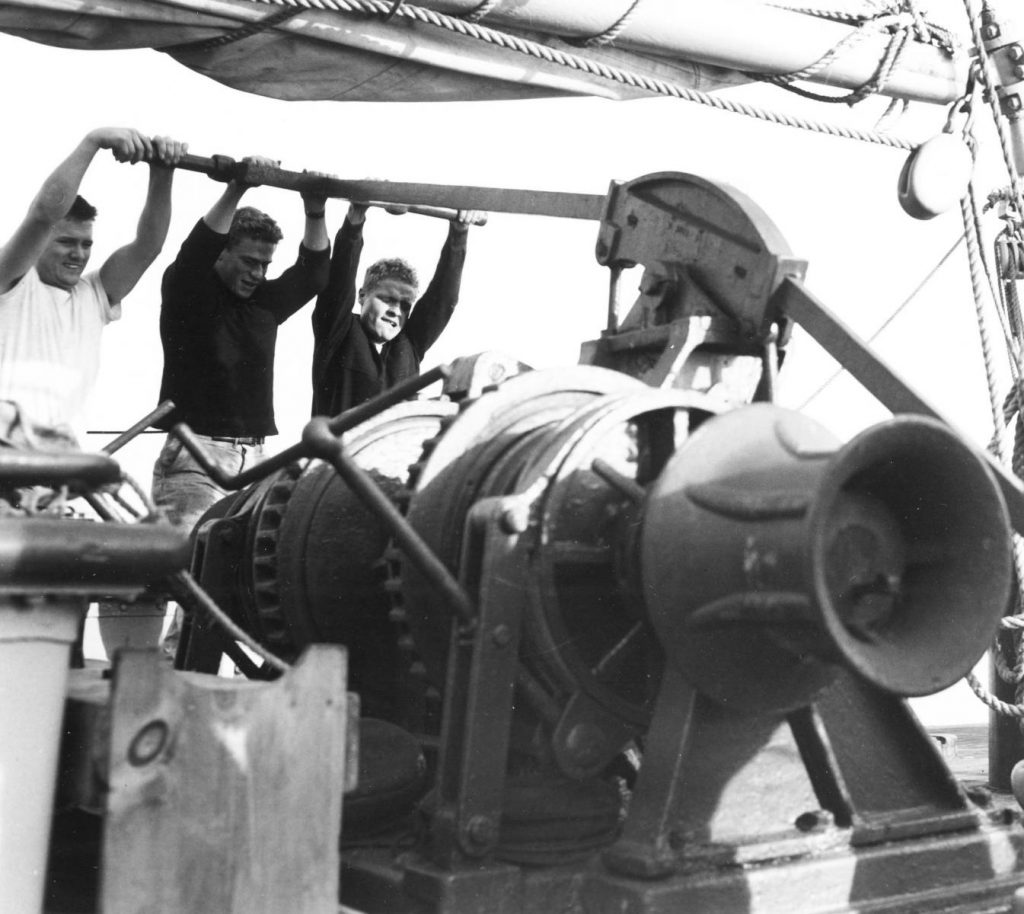Here list of the A-Rovin – Pump Shanties
Interesting Facts about the A-Rovin – Shanties Family
A-Rovin – Shanties Family is a set (variations and versions), of the shanty “A-Rovin”. It is also known under the title “Maid of Amsterdam”. This family of shanties was used for pumps and old fashion windlass. Windlass (anchor windlass), is the device for pulling up anchor from the sea bottom. Work happens by moving up and down levers on both sides of the device. The mechanism spin anchor or line on the windlass barrel. Each move pulls the anchor about a couple of inches.

The above image gives us an idea of how looks work at the anchor windlass. In this particular section, I want to describe to you another purpose of “A-Rovin – Shanties Family”. This purpose is shanty for the pumps. Stan Hugill in his description of the “A-Rovin'” tells about the evolution of the pump or windlass shanties. He says that many shanties started life at the pump-brakes or old-fashioned windlass levers. When ships started using capstans with a large windlass below the fo’c’sle-head and iron ships began to replace wooden ones. After these shanties were adapted for use at the capstan and not so often used flywheel or Downton Pump.

I will show you a few versions described by Stan Hugill in his “Shanties From the Seven Seas”. All video reconstructions are trying to direct the listener to how they sound in actual ship deck action when sailors using it.
The above image displays sailors working at a Downton type of pump.
Short story of the A-Rovin
Stan Hugill tells us that some collectors state that the words are in, or bear a certain resemblance to lines in, a song given by T. Heywood in his play “The Rape of Lucrece” (1640). But Stan Hugill doesn’t agree with this thesis.
Worth mentioning Stan Hugill’s opinion about the tempo used by nova days stage shanty bands. When singing A-Rovin, he tells us that he feels, always sings much too fast. The words “A-Rovin, a-rovin'” should be timed to fit the downward movement of a four-diameter pump wheel.
My private collection of books
Shantyman library – you will see descriptions and recommendations of positions worth diving into, true sources of knowledge about sea shanties. To gain knowledge about sea shanties is the main ultimate purpose of this library, every book in this library is somehow related to sea shanties and before mast songs.
More involvement in Traditional Sea Shanties
You can find this record here or directly listen below. If you want to discuss the record or share your opinion you can do it in my Facebook forum here.
